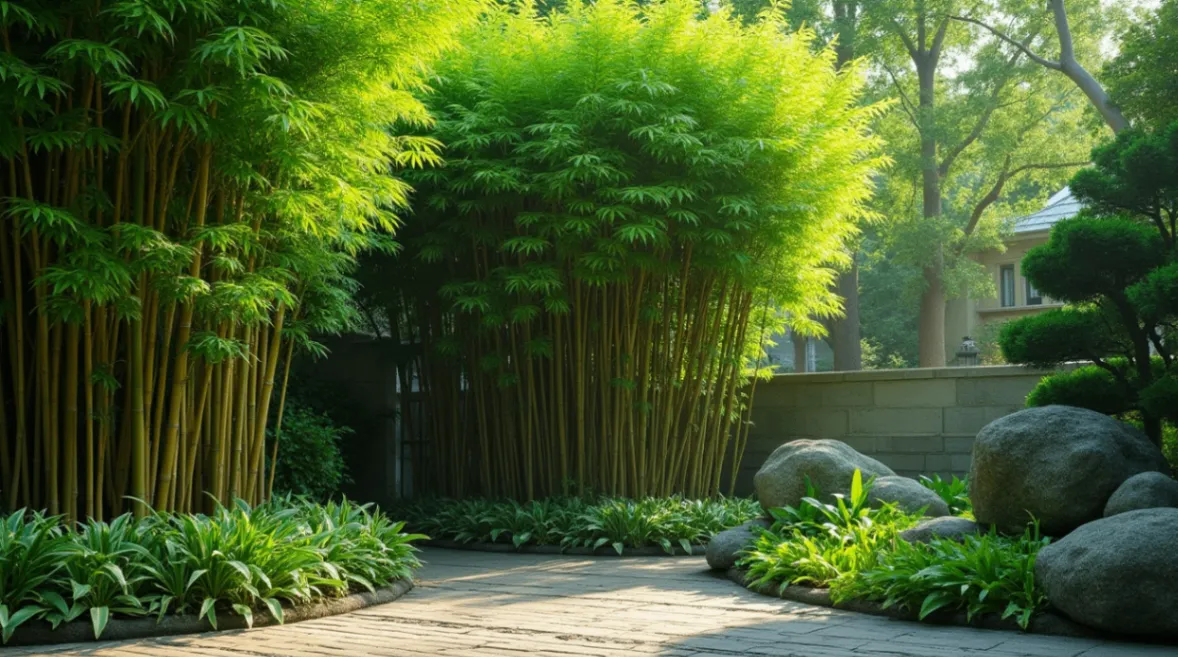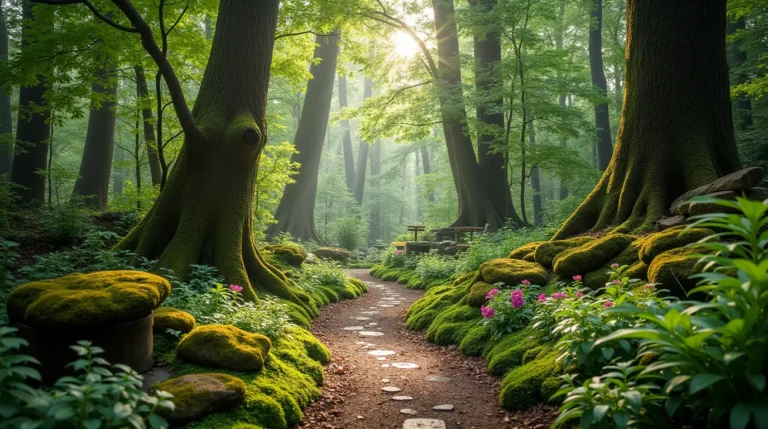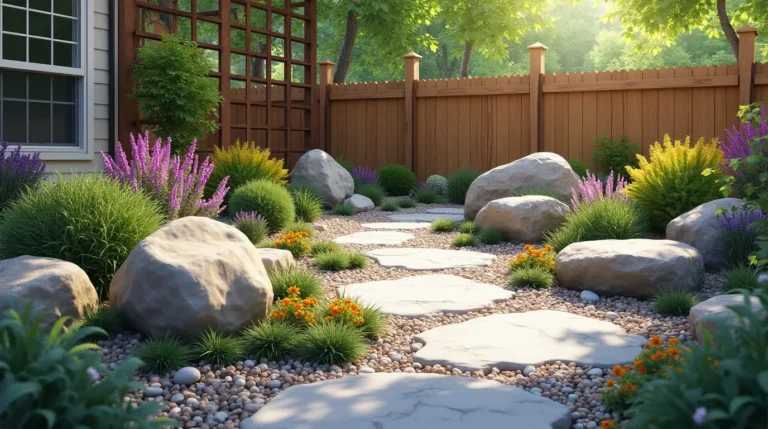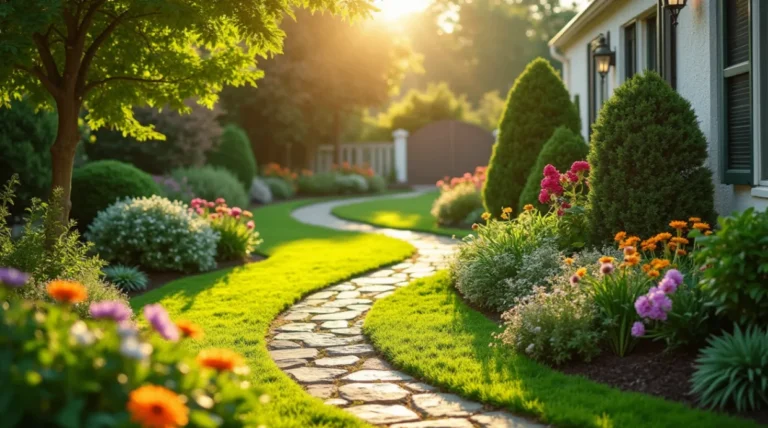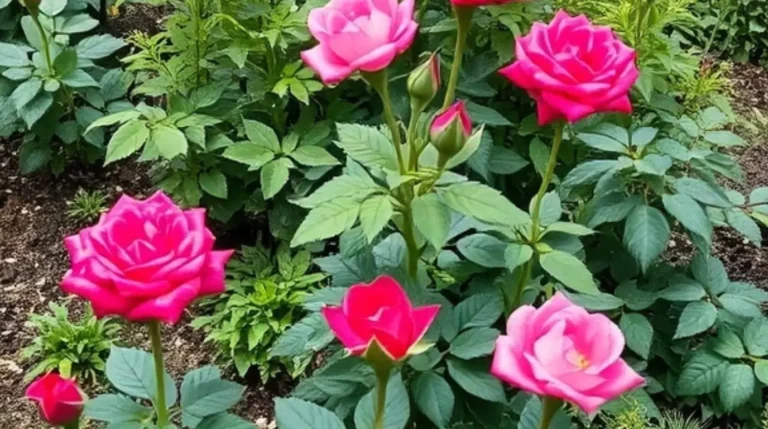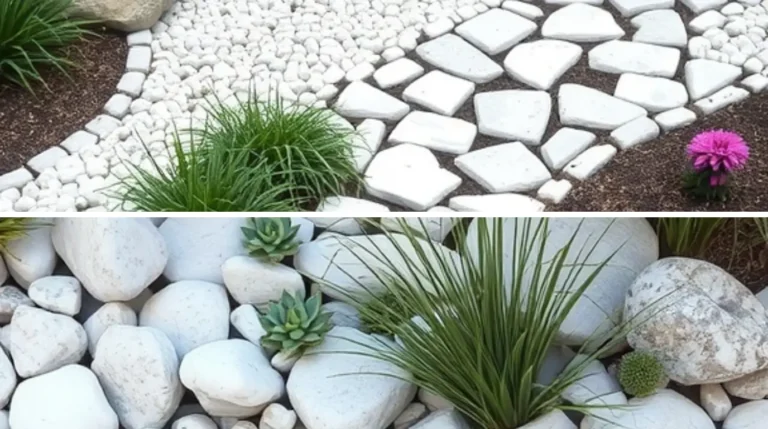Bamboo Garden: Why It’s The Best Eco-Friendly Landscaping Choice
A bamboo garden is perfect for those wanting an eco-friendly outdoor space. Bamboo is a renewable resource that supports sustainable design. It’s great for homeowners looking to lower their carbon footprint.
In the United States, many are choosing bamboo gardens for their green spaces. These gardens are not just pretty; they also clean the air and stop soil erosion. By using bamboo, homeowners can make their outdoor areas beautiful and eco-friendly.
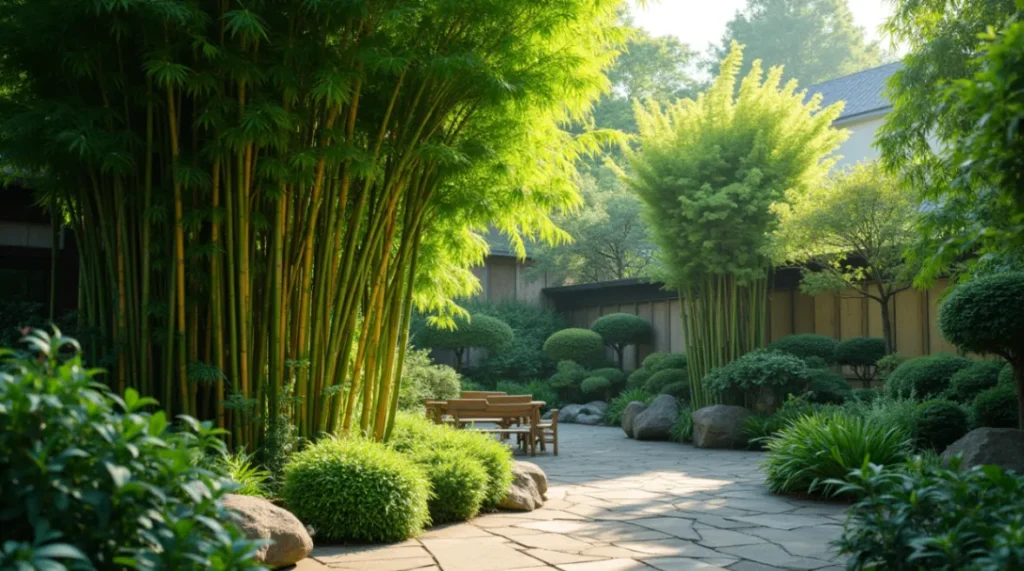
Bamboo gardens offer many benefits, like reducing noise and supporting wildlife. Their popularity in eco-friendly landscaping is growing. Choosing a bamboo garden means creating a space that’s good for the planet and looks great.
Key Takeaways
- A bamboo garden is a great option for eco-friendly landscaping
- Bamboo is a highly renewable resource that can be used to create a sustainable design
- A bamboo garden provides numerous environmental benefits, including air purification and soil erosion prevention
- Bamboo gardens can help reduce noise pollution and create a natural habitat for wildlife
- A well-designed bamboo garden can be a beautiful and sustainable addition to any outdoor space
- Bamboo gardens are a popular choice for homeowners who want to create a green and sustainable outdoor space
Understanding the Appeal of Bamboo Gardens
Bamboo gardens are loved for their bamboo garden appeal. Bamboo has been around for ages, used in many ways. Now, it’s used in modern applications like green design and building.
The cultural impact of bamboo gardens is big. Many cultures use bamboo in their traditions and ceremonies. Some key benefits of bamboo gardens are:
- Low maintenance
- Highly durable
- Eco-friendly
Bamboo has a long history in landscaping. It’s been used in ancient Chinese and Japanese gardens. Today, it’s used in modern applications like green design and building.
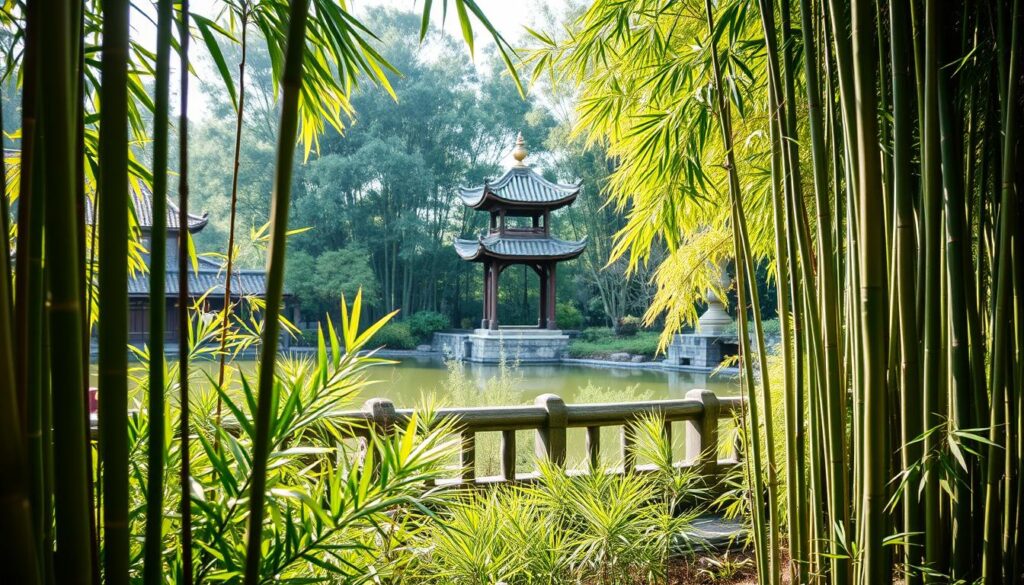
Historical Significance of Bamboo in Landscaping
Bamboo has been in landscaping for centuries. It’s been found in ancient Chinese and Japanese gardens.
Modern Applications in Sustainable Design
Bamboo is used in modern ways like green design and building. It’s durable and good for the environment.
Cultural Impact of Bamboo Gardens
Bamboo gardens have a big cultural impact. Many cultures use bamboo in their traditions and ceremonies.
| Bamboo Garden Benefits | Description |
|---|---|
| Low Maintenance | Bamboo gardens need little care, perfect for those who are busy. |
| Highly Durable | Bamboo can handle different weather, making it great for outdoor spaces. |
| Eco-Friendly | Bamboo is good for the planet, being sustainable and renewable. |
Environmental Benefits of Creating a Bamboo Garden
Creating a bamboo garden is a great way to help the environment. It’s good for sustainable landscaping because it has many benefits. One big plus is that bamboo helps take in more carbon dioxide and makes more oxygen than many plants.
Some of the key environmental benefits of a bamboo garden include:
- Soil erosion prevention: Bamboo roots help hold the soil in place, preventing erosion and landslides.
- Biodiversity promotion: Bamboo gardens provide a habitat for various plants and animals, promoting biodiversity and ecosystem health.
- Climate regulation: Bamboo plants help regulate the climate by providing shade, reducing wind speed, and maintaining soil moisture.
Sustainable landscaping is key to protecting our environment, and bamboo gardens are a big part of it. By making a bamboo garden, people can help make landscaping more eco-friendly. This is crucial for keeping our planet healthy.
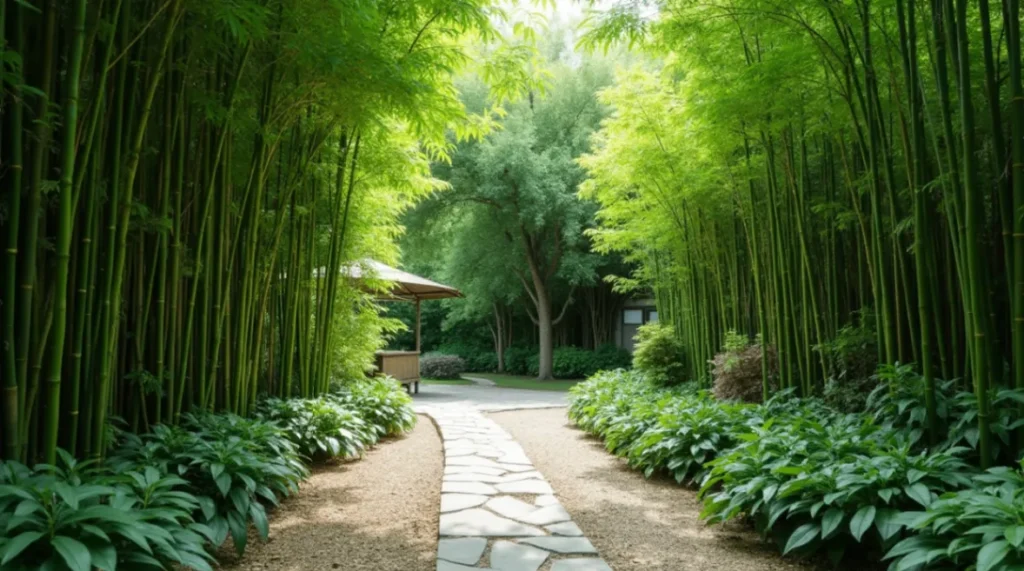
Bamboo gardens also make your outdoor space look amazing. With its tall stalks and feathery leaves, bamboo adds elegance and sophistication. Adding a bamboo garden to your yard can make it a peaceful and beautiful place.
Bamboo gardens are a great way to promote environmental benefits while also creating a beautiful and unique landscape feature. By choosing sustainable landscaping options like bamboo, individuals can contribute to a healthier planet and enjoy the many benefits of a well-designed outdoor space.
Essential Tools and Materials for Bamboo Gardening
To start a bamboo garden, you need the right bamboo gardening tools and essential materials. You’ll need gloves, pruning shears, and a watering can. These tools make gardening easier and more fun.
Make sure you have a shovel, rake, and measuring tape. Also, don’t forget protective gear like gloves and safety glasses. They help prevent injuries from sharp objects and thorny plants.
Basic Equipment Checklist
- Gloves
- Pruning shears
- Watering can
- Shovel
- Rake
- Measuring tape
Bamboo plants like well-draining soil that’s rich in organic matter. Adding compost or manure can make the soil better for your plants.
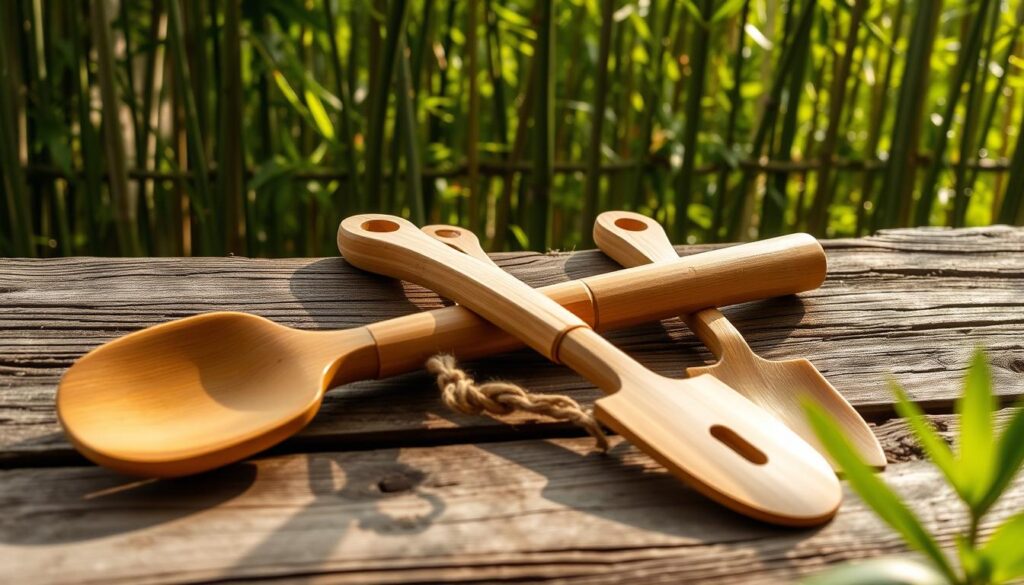
Soil Requirements and Amendments
| Soil Type | pH Level | Organic Matter |
|---|---|---|
| Clay | 6.0-7.0 | 10-20% |
| Sandy | 6.0-7.0 | 5-10% |
| Loamy | 6.0-7.0 | 15-25% |
With the right bamboo gardening tools and essential materials, including protective gear, you’re ready to create a beautiful bamboo garden.
Selecting the Right Bamboo Species
Choosing the right bamboo species is key for a stunning bamboo garden. With over 1,000 species, picking the right one can be tough. Think about your garden’s climate, space, and look you want.
Here are some gardening tips for picking a bamboo species:
- Check the bamboo’s mature size to make sure it fits your garden
- Choose a species that matches your area’s climate and soil
- Look into different bamboo types and their unique features, like color and growth habits
By considering these points and doing your homework, you can pick the best bamboo species for your garden. Enjoy the many perks of bamboo gardening.
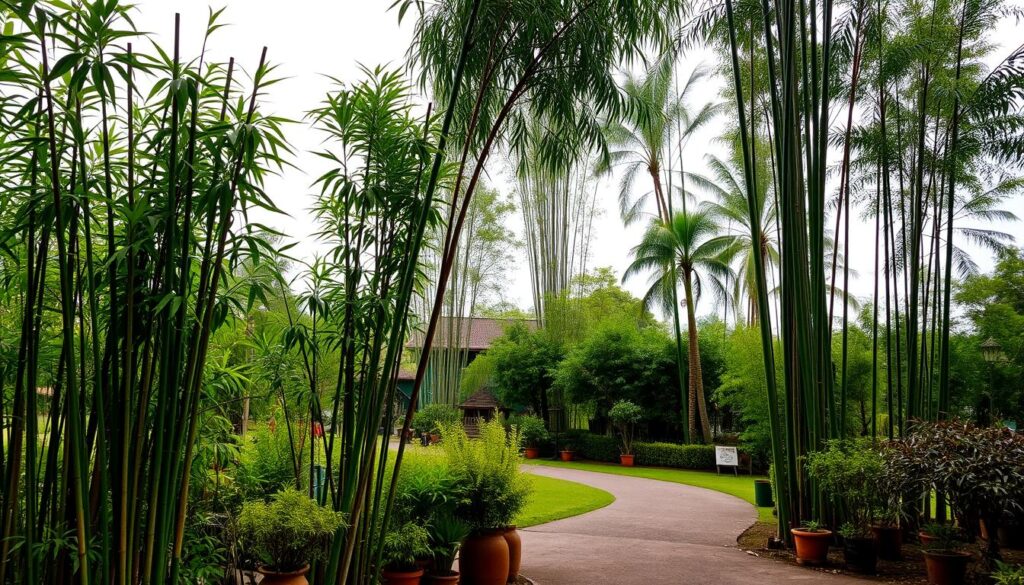
| Bamboo Species | Mature Size | Climate |
|---|---|---|
| Japanese Timber Bamboo | 20-30 feet | Cool, temperate |
| Black Bamboo | 10-20 feet | Warm, tropical |
| Golden Bamboo | 15-25 feet | Mild, subtropical |
Planning Your Bamboo Garden Layout
When designing a bamboo garden, it’s key to think about the bamboo garden layout. This ensures it fits well with the surrounding landscape. You need to consider space considerations, like the area’s size and the bamboo plants’ mature size.
It’s also important to think about climate compatibility. Different bamboo species do well in different climates. Knowing what your bamboo needs helps create a garden that looks good and works well.
Key Considerations for a Successful Bamboo Garden
- Evaluate the space available for the bamboo garden, considering the mature size of the plants.
- Assess the climate and choose bamboo species that are compatible with the local conditions.
- Consider the design elements and aesthetics you want to achieve in your bamboo garden.
By planning your bamboo garden layout carefully, you can make a beautiful and thriving garden. This garden will make your outdoor space even better.
Site Preparation and Soil Requirements
Before starting a bamboo gardening project, it’s key to prepare the site and check the soil requirements. You need to assess the land, clear it of debris, and test the soil. This will tell you the soil’s pH level and nutrient content.
A well-prepared site is vital for bamboo plants to grow well. Site preparation means removing weeds, rocks, and other things that could harm the bamboo. Also, the soil needs to be changed to fit the soil requirements of the bamboo you’re planting.
When getting the soil ready for bamboo gardening, remember these important points:
- Soil pH: Most bamboo likes a slightly acidic to neutral soil pH, between 6.0 and 7.0.
- Nutrient content: Bamboo needs enough nutrients like nitrogen, phosphorus, and potassium to grow well.
- Drainage: Bamboo prefers soil that drains well to avoid waterlogged conditions.
By following these tips and preparing the site and soil well, you can make a perfect place for your bamboo plants to flourish.
Planting Techniques for Successful Growth
To grow bamboo well, you need the right planting methods. Think about soil quality, sunlight, and water. Follow these steps for a beautiful, green garden.
Choosing the right spot is key. Bamboo likes well-draining soil and lots of sun. Make sure the area is big enough for the plants to grow. This keeps them healthy and prevents overcrowding.
Step-by-Step Planting Guide
- Choose a location with the right soil and sunlight conditions
- Prepare the soil by adding organic matter and fertilizers
- Plant the bamboo at the correct depth and spacing
- Water thoroughly and keep the soil consistently moist
Spacing Requirements
Spacing is very important for bamboo. The distance depends on the bamboo type. But, a good rule is to plant them 3-5 feet apart. This keeps air moving and stops overcrowding.
Root Barrier Installation
Installing a root barrier is crucial. It stops bamboo from spreading too far. By using these planting tips, you can grow bamboo successfully and enjoy its benefits.
Watering and Irrigation Systems
Proper watering is key for a bamboo garden’s health and growth. Bamboo needs steady moisture, especially in the first year. Irrigation systems help make sure your bamboo gets the right water.
When caring for your bamboo garden, finding the right water balance is important. Here are some tips to remember:
- Water your bamboo deeply once or twice a week, depending on the weather.
- Use a drip irrigation system to water the roots directly, cutting down on evaporation and runoff.
- Check the soil moisture by feeling it with your finger up to the knuckle. Adjust your watering plan as needed.
With a good irrigation system and proper watering methods, your bamboo garden will flourish. Enjoy the many perks of bamboo garden care.
| Watering Tips | Benefits |
|---|---|
| Water deeply once or twice a week | Promotes healthy root growth |
| Use a drip irrigation system | Reduces water waste and runoff |
| Monitor soil moisture | Prevents overwatering and root rot |
Natural Pest Control Methods
Bamboo gardens face many pests like insects and rodents. To keep your garden healthy and pest-free, natural pest control is key. Organic solutions, such as neem oil and diatomaceous earth, are very effective.
Some common pests in bamboo gardens include:
- Aphids
- Whiteflies
- Spider mites
These pests can harm your bamboo plants, slowing their growth and productivity. To stop this, using natural pest control is vital. This includes introducing beneficial insects or using physical barriers.
Preventing pests is also important. Regularly check your plants for signs of pests. Act quickly to stop pests from spreading.
By choosing natural pest control and organic solutions, you can keep your bamboo garden healthy. This method protects the environment and ensures your garden’s long-term health.
| Pest | Natural Control Method |
|---|---|
| Aphids | Neem oil, soap solution |
| Whiteflies | Yellow sticky traps, insecticidal soap |
| Spider mites | Diatomaceous earth, horticultural oil |
Seasonal Maintenance Tips
To keep your bamboo garden thriving, it’s key to do seasonal maintenance tasks. These tasks protect your garden from harsh weather and keep it healthy and lively all year.
Here are some valuable tips to get you started:
- Prune your bamboo plants regularly to maintain shape and promote healthy growth.
- Fertilize your bamboo garden during the growing season to provide essential nutrients.
- Protect your garden from extreme weather conditions, such as frost or drought, by using mulch or other protective measures.
By following these seasonal maintenance tips, you’ll enjoy your beautiful bamboo garden care all year. Stay on top of maintenance tasks to prevent problems and keep your garden thriving.
With proper seasonal maintenance, your bamboo garden care will become a stunning oasis. It will bring you joy and serenity. So, take the time to learn about your bamboo plants’ needs and follow these tips to create a thriving garden.
Pruning and Growth Control Strategies
Pruning is key in bamboo garden care. It keeps the bamboo from growing too wild. Regular pruning also makes sure the bamboo stays healthy and not too thick. You’ll need a sharp saw or loppers, gloves, and eye protection to prune.
Timing is everything for growth control. Prune your bamboo in late winter or early spring. This is when it’s dormant. It’s the best time to cut out dead or damaged parts and control its spread. Proper pruning techniques are vital to avoid harming the plant and encourage healthy growth.
Tools for Pruning
- Sharp saw or loppers
- Gloves
- Protective eyewear
Timing and Technique
The pruning method depends on the bamboo type and your goals. For example, to limit bamboo height, you can “top” it by cutting the top part of the culm. To thin it out, use “selective pruning” to remove some culms and let more light in.
Managing Spread
To stop bamboo from spreading, use a physical or chemical barrier. You can also prune and divide regularly. These steps help keep your bamboo garden in check. This way, you can enjoy its beauty and low upkeep, which are big pluses in bamboo garden care.
| Pruning Tool | Description |
|---|---|
| Sharp saw | Used to cut through thick culms |
| Loppers | Used to cut through smaller culms |
| Gloves | Used to protect hands from cuts and scratches |
Harvesting and Using Bamboo
Harvesting bamboo is key to using this versatile and renewable resource. We cut the mature stalks, leaving the younger ones to grow. This way, we harvest sustainably, without harming the plant or the environment. Bamboo has many uses, from crafting and building to cooking and medicine.
Using bamboo has many benefits. It’s a sustainable product that needs little water and no pesticides. Bamboo is also very strong, perfect for building and making things. Plus, it’s been used in medicine for ages, and its use in cooking is growing.
- Construction materials, such as flooring and roofing
- Crafting, including furniture and decorative items
- Culinary uses, such as bamboo shoots and bamboo-based dishes
- Medicinal applications, including traditional remedies and modern treatments
Bamboo’s versatility makes it great for sustainable products. Harvesting it can be done in a way that’s good for the environment.
Bamboo is a highly renewable resource, with some species growing up to 3 feet per day. This rapid growth rate makes bamboo an ideal crop for sustainable harvesting and use.
Common Challenges and Solutions
Starting a bamboo garden is rewarding but comes with challenges. Issues like growth control and weather damage are common. Finding the right solutions is key to a healthy bamboo garden.
Bamboo gardeners often face growth control issues and weather-related problems. These include damage from strong winds or drought. Maintenance difficulties also arise, especially with pruning and harvesting.
Growth Control Issues
To manage growth, gardeners use root barriers and regular pruning. These methods prevent bamboo from spreading too fast. They help keep the garden balanced.
Weather-Related Problems
Protecting bamboo from extreme weather is crucial. Installing windbreaks or using mulch helps. Mulch retains soil moisture.
Maintenance Difficulties
Maintenance can be made easier with a routine. This includes pruning, watering, and fertilizing. Regular care prevents common problems and keeps the garden healthy.
Understanding bamboo gardening challenges and solutions prepares gardeners. With the right knowledge, anyone can create a beautiful bamboo garden. It brings joy and serenity to outdoor spaces.
Combining Bamboo with Other Plants
Creating a diverse and thriving garden is easy with combining bamboo and other plants. Companion planting in your garden design makes your outdoor space beautiful and useful. It lets you use the special benefits of different plants to balance your garden.
Flowers, herbs, and vegetables are great to pair with bamboo. Marigolds and nasturtiums keep pests away. Comfrey and clover enrich the soil. The right mix of plants makes your garden look good and helps the environment.
Here’s how to start with companion planting: * Pick plants that like the same conditions and need similar care * Choose plants that offer different benefits, like pest control and soil enrichment * Make sure each plant has enough room to grow By following these tips and adding combining bamboo to your garden design, you’ll have a lively and diverse garden. It’s perfect for relaxing and enjoying the outdoors.
Creating Privacy Screens with Bamboo
Creating privacy screens with bamboo involves several key factors. The height of the screen is crucial. Height considerations depend on the area’s needs, like blocking windows or creating seclusion.
The type of bamboo used is also vital. Some species are better for privacy due to their density and growth. Species selection should consider climate, soil, and maintenance needs.
After choosing the bamboo, think about how to install it. You can plant it in the ground or use a container. The choice depends on the area’s needs and how permanent you want the screen.
Some common ways to install bamboo privacy screens include:
- Planting the bamboo in a trench or hole
- Using a container or planter
- Creating a bamboo fence or screen
By considering these factors and choosing the right installation, you can make a beautiful bamboo privacy screen. It will meet your needs and improve your outdoor space.
| Bamboo Species | Height | Growth Habit |
|---|---|---|
| Timor Black | 10-15 feet | Dense, clumping |
| Guadua | 20-30 feet | Aggressive, spreading |
Conclusion: Embracing the Beauty and Benefits of Your Bamboo Garden
Creating a bamboo garden is a great choice for eco-friendly landscaping. Bamboo’s natural beauty, environmental benefits, and cultural significance make it special. It adds beauty to your outdoor space and helps the planet.
Bamboo is great for growth, privacy, and design. It will keep surprising and inspiring you. Enjoy the peace, greenery, and cultural value your bamboo garden brings.
Investing in bamboo gardening supports sustainable living worldwide. Celebrate your bamboo garden‘s beauty and encourage others to try eco-friendly landscaping.
FAQ
What is a bamboo garden?
A bamboo garden is a special kind of outdoor space. It uses different types of bamboo plants. These plants are good for the environment and make your garden look amazing.
What are the benefits of creating a bamboo garden?
Bamboo gardens are great for many reasons. They help keep the air clean, stop soil from washing away, and support many different plants. They also need little care, can handle dry spells, and offer privacy or block wind.
What type of bamboo species should I choose for my garden?
Choosing the right bamboo depends on your climate, how much space you have, and what you like. Make sure to pick a type that grows well in your area. This will help your bamboo plants thrive.
How do I prepare the site and soil for a bamboo garden?
Getting your site and soil ready is key for a healthy bamboo garden. Make sure the soil is the right pH, drains well, and has the nutrients bamboo needs. Also, put in root barriers to stop bamboo from spreading too much.
What are the best planting techniques for bamboo?
Planting bamboo right is important for its health. Make sure to plant at the right depth and space them correctly. Follow guides and spacing rules for each type of bamboo.
How do I care for my bamboo garden throughout the year?
Taking care of your bamboo garden all year round is important. You’ll need to water, prune, fertilize, and protect it from harsh weather. Pay attention to what your bamboo needs and adjust your care as needed.
How do I control the growth and spread of bamboo in my garden?
Keeping bamboo from growing too much can be a challenge. But, you can manage it by pruning, using root barriers, and growing it right. Regular maintenance is key to keep bamboo from taking over.
What are some common challenges in maintaining a bamboo garden, and how can I address them?
Issues like controlling bamboo growth, dealing with weather, and keeping up with maintenance are common. You can solve these by planning well, using the right tools, and being proactive.
How can I combine bamboo with other plants in my garden?
Mixing bamboo with other plants can make your garden interesting and diverse. Choose plants that like the same light, water, and soil as bamboo. This way, your garden will be beautiful and healthy.
Can I use bamboo to create privacy screens or windbreaks?
Yes, bamboo is perfect for making privacy screens and windbreaks. Pick the right type and install it correctly. This way, you’ll have a beautiful and functional bamboo screen for your outdoor space.

